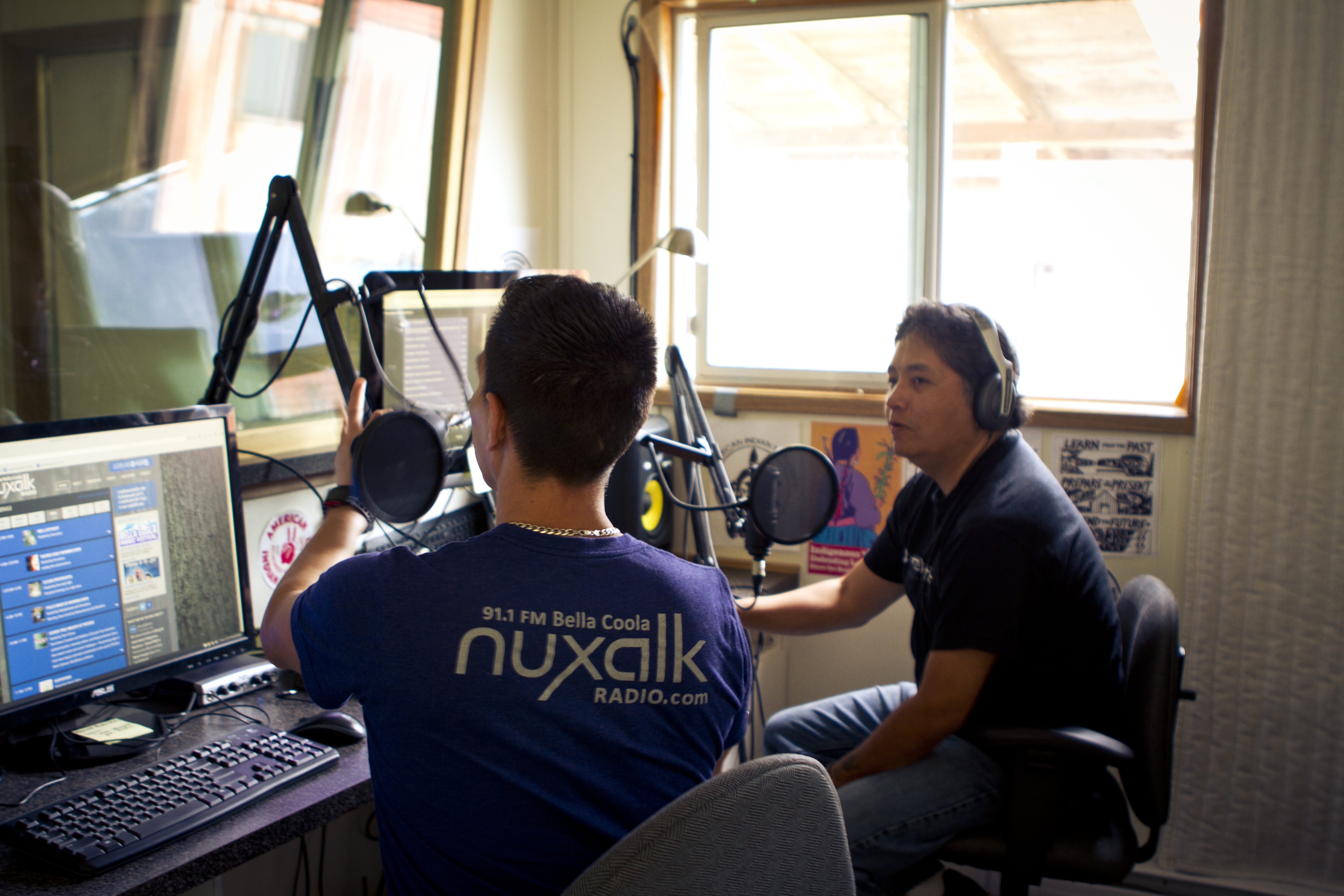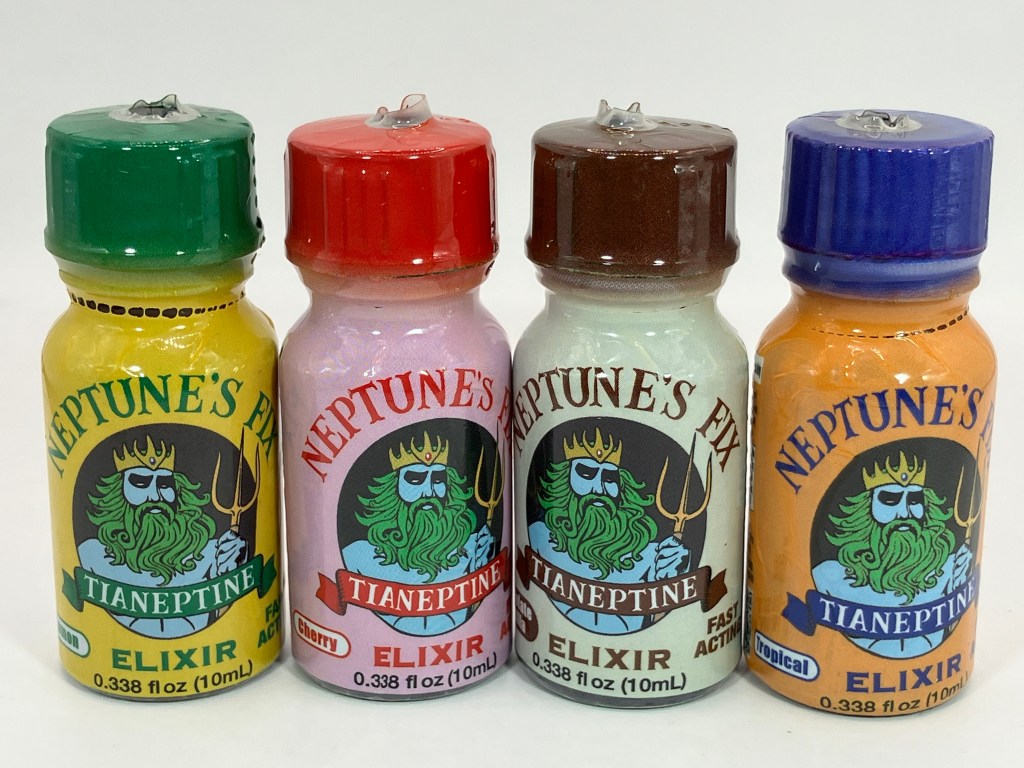In the struggle to preserve Indigenous languages, community radio stations have emerged as a key tool to help mother tongues that were crushed under the weight of colonialism flourish once again.
What was once forbidden and punished by the Canadian government — the speaking of one’s own language — can be heard with a turn of the dial.
Videos by VICE
Many radio stations in Indigenous communities feature a sprinkling of language lessons, but two in particular are making it their programming mandate to heavily push out language content.
The Nuxalk Radio station, in British Columbia’s beautiful Bella Coola valley, has become a model of sorts, delivering language programming that aims to uplift and empower the Nuxalkmc, that count 893 members living in Bella Coola.
The station was launched amid the Idle No More movement, when a group of people came together to figure out how Nuxalk could participate in the resistance, and their plan homed in on saving their language. They had only 11 elder speakers left at that time, and four years later, there are four fluent first-language speakers.
The radio station dedicates almost half of its airtime to language learning. The hosts are taught by a fluent speaker on how to speak Nuxalk, and then share what they’ve learned on-air. Programming includes basic word and definition, and there’s a daily lesson with the alphabet.

“Nuxalk language is really challenging to pronounce,” says Banchi Hanuse, the station’s manager. “There’s a lot of glottal throat sounds so learning the alphabet is almost like step one.”
They use First Voices, a web-based Indigenous language tool administered by the First Peoples Cultural Council, which assists in the documentation and education of Indigenous languages, and hosts 47 languages in B.C. All the hosts play audio or look up a word from First Voices, says Hanuse. Nuxalk Radio also airs archival language recordings, such as elders speaking with anthropologists, linguists, and ethnobotanists many years ago.
The hard work has begun to pay off in the community. Hanuse says that because of residential schools that removed children from Indigenous communities and forbade them from speaking their languages, there’s almost a subconscious shame in speaking one’s mother tongue. Hearing it on the radio has made the Nuxalk people more comfortable in speaking the language to each other.
“You do hear it a lot more, basically things like hello, thank you, good morning, you can hear people embracing it and introducing themselves in Nuxalk,” says Hanuse. “It’s a major psychological shift that’s happening in the community, as part of who we are again, proud of the language.”
“It’s a major psychological shift that’s happening in the community, as part of who we are again, proud of the language.”
In addition, they’ve passed along their knowledge of operating a language-focused radio station to other nations, helping the neighbouring Tsilhqot’in and Heiltsuk nations to get their radio stations started.
Graham Gillies is the Tsilhqot’in radio station manager. He visited Nuxalk’s radio station and was “totally blown away” by what they’d accomplished with a small amount of resources.
“They had such great energy,” he recalls. “They had people of all ages involved, they had elders in the studio, and I took that as the framework for getting it started up here.”
In October of 2017 the Tsilhqot’in station launched two pilot FM stations in the communities of Tl’etinqox and Tsideldel, and successfully implemented Tsilhqot’in language content, including prayers in the language every morning at 5 a.m. Gillies says they’re currently in the process of launching stations into the other four Tsilhqot’in communities along with a dedicated website to host a live stream.
The people in these communities who have banded together to manage, run and host these language-based radio stations are resourceful, despite having little resources, and up for a challenge. Indigenous community radio stations are no easy feat — they are often in remote locations, have poor internet connections, and work out of unconventional spaces. The Nuxalk studio runs out of what Hanuse describes as a “dinky trailer.” (Both the Nuxalk and Tsilhqot’in stations worked with OpenBroadcaster’s Rob Hopkins, who specializes in open source radio and media broadcasting.)
Whereas the Nuxalk language is the most fragile in British Columbia, the Tsilhqot’in language is thriving, with the largest fluency in B.C.
“We’re so lucky that there’s enough experts and fluent speakers alive and willing to share their knowledge, and be in front of a microphone telling stories and jokes and having conversations,” says Gillies. “I’m a huge radio fan and as a non-First Nation person I do have an appetite for that.” He says they are currently broadcasting a variety of original content and local music, as well as the recent audio in both languages of the prime minister’s visit to Title Lands for the exoneration of the Tsilhqot’in war chiefs.
One void in particular that the Tsilhqot’in radio station is looking to fill revolves around emergencies. Despite having so many fluent speakers, all the emergency transmissions during last year’s wildfires were in English, said Gillies. In early January they will be launching emergency broadcast tests in the Tsilhqot’in language.
“Can you imagine not even being able to know what’s going on in one language, and then having to translate that and the amount of stress that would cause?”
Many Tsilhqot’in people feel that radio is a means to keep people connected and conversations going on how to revitalize their traditional laws and integrate them into the modern world.
“It’s something we take for granted as a general population, that we’re English speakers and we can turn on the radio and hear programming that’s fully in the language,” says Gillies. “It’s a huge shift in consciousness and pride to be able to turn on the radio and hear a full conversation without a single English word, and it’s a revolutionary act to have maintained that for the communities.”
“It’s a revolutionary act to have maintained that for the communities.”
The radio stations in B.C. aren’t the only Indigenous radio stations – there are many community stations across the country (mine is CKRZ, the Voice of the Grand, based in Six Nations), with varying levels of language programming. In Edmonton, CFWE-FM has been operating for 30 years, and airs a mix of corporate and community content, so listeners can tune into a conversational Cree hour, or country music from Indigenous artists.
Many more Indigenous stations emulate the mainstream stations, according to Hanuse. “One station for example is just playing rock music, versus trying to educate,” she said.
At Nuxalk Radio, hosts can play whatever they want, but the only music the station programs is music by Indigenous people, across Canada and around the globe, or any musician local to the territory.
For the future, Gillies says he has a succession strategy for placing a Tsilhqot’in in his role as station manager. He and Hanuse have plans to create an interregional Indigenous radio network that focuses on Indigenous issues and cross-platform language lessons, for people who speak Nuxalk and Tsilhqot’in.
Those plans would do a lot for easing the burden for the small teams that put together all of the programming. “Right now we take a lot on, and it’s a lot to run a station 24/7 in a community,” says Hanuse.
On her wish list is a transmitter to reach more of the Bella Coola Valley, and a bigger space to work in. Currently they reach their reserve, but Hanuse says it’d be nice to reach the whole valley. And lastly, she says she wants every single host to speak Nuxalk fluently. She wants a completely Nuxalk language broadcast on-air as her ultimate goal.
Cover image of Ximaksta (Barry Mack), Slts’lani (Banchi Hanuse) and Nuhawhawta (Sheldon Tallio). All images by Gwyneth Anderson, Love Central Coast BC.




